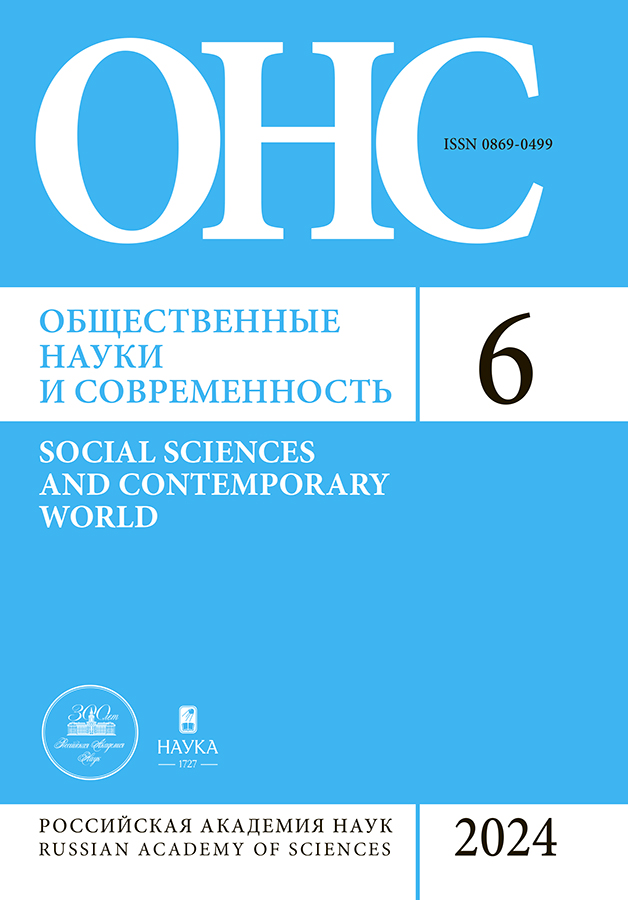Depopulation of the Baltic states in the сontext of European integration
- Autores: Kondratieva N.B.1
-
Afiliações:
- Institute of Europe RAS
- Edição: Nº 6 (2024)
- Páginas: 68-82
- Seção: Migration problems
- URL: https://gynecology.orscience.ru/0869-0499/article/view/681325
- DOI: https://doi.org/10.31857/S0869049924060055
- EDN: https://elibrary.ru/JBLIYW
- ID: 681325
Citar
Texto integral
Resumo
The Baltic countries, which have become donors of labor resources for the prosperous countries of the European Union, are experiencing the phenomenon of depopulation. It shows a significant and a stable decrease in the population of Latvia, Lithuania and Estonia from the late 1980s to the present day in comparison with other catching-up EU countries. The inattention to the depopulation problem of catching-up countries is interpreted as a major miscalculation of the supranational level of EU power and a test for the fundamental principle of European integration – freedom of movement of people. It is proposed to consider the loss of well-being caused by depopulation among the reasons for the steady lag in the development of the peripheral countries as compared to the core countries of the EU. Brussels is not coping with the task of smoothing territorial imbalances; stimulating the economic growth of catching-up countries requires a more significant inflow of capital and transfers from the EU Budget; part of them goes to compensate for losses from population outflow. Special attention is paid to the discussion at the national and supranational levels on the prospects of the EU. It has outlined a turn towards setting goals for demographic transition, which, taking into account depopulation, has reason to become another driving force for the transformation of the EU, along with the green and digital transition.
Texto integral
Sobre autores
Natalia Kondratieva
Institute of Europe RAS
Autor responsável pela correspondência
Email: nkondratieva@inbox.ru
ORCID ID: 0000-0002-8801-3126
Candidate of Sciences (Economics), Scientific Secretary, Leading Research Fellow, Department of European integration studies, Head of Centre for Economic Integration Studies
Rússia, MoscowBibliografia
- Оленченко В.А. (2021) Страны Прибалтики в Евросоюзе: основные характеристики членства и антироссийская ориентация // Общественные науки и современность. № 4. С. 64–76. https://doi.org/10.31857/ S086904990016456-3 Olenchenko V. (2021) Baltic States in the European Union: Main Characteristics of Membership and Anti-Russian Orientation. Obshchestvennye nauki i sovremennost’, no. 4, pp. 64–76. https://doi.org/10.31857/ S086904990016456-3 (In Russ.)
- Пророкович Д. (2023) Депопуляция Балкан: как опустошается периферия ЕС // Современная Европа. № 6. С. 71‒80. https://doi.org/10.31857/S0201708323060074 Proroković D. (2023) Depopulation of the Balkans: how the EU Periphery is Hollowing Out. Sovremennaya Evropa, no 6, pp. 71‒80. https://doi.org/10.31857/S0201708323060074 (In Russ.)
- Berzins A., Zvidrins P. (2011) Depopulation in the Baltic States. Lithuanian Journal of Statistics, vol. 50, no 1, pp. 39–48.
- Coleman D., Rowthorn R. (2011) Who’s afraid of population decline? A critical examination of its consequences. Population and Development Review, no 37, pp. 217–248. https://doi.org/10.1111/j.1728-4457.2011.00385.x
- Cruz M., Ahmed S.A. (2018) On the impact of demographic change on economic growth and poverty. World Development, vol. 105, pp. 95–106. https://doi.org/10.1016/j.worlddev.2017.12.018
- Dijk van J., Brunow S., Dall Schmidt T. (2022). The long-term consequences of brain drain related to depopulation on social and territorial cohesion with a focus on the North of the Netherlands and a short comparison with Germany and Denmark: Research Report Department of Economic Geography. RUG Faculty of Spatial Sciences. 133 p. https://pure.rug.nl/ws/portalfiles/portal/250905234/Braindrain_paper_DG_REGIO_Jouke_van_Dijk_October_2022.pdf
- Fihel A., Okólski M. (2019) Population decline in the post-communist countries of the European Union. Population & Societies, no 567(6), 1–4. https://shs.cairn.info/journal-population-and-societies-2019-6-page-1?lang=en
- Gebauer C. Sommer R. (2024) Beyond Vicarious Storytelling: How Level Telling Fields Could Help Create a Fair Narrative on Migration [version 2; peer review: 2 approved] Open Research Europe, 3:10. https://doi.org/10.12688/openreseurope.15434.2
- González-Leonardo M., Newsham N., Rowe F. (2023) Understanding population decline trajectories in Spain using sequence analysis. Geographical Analysis, no 55, pp. 495–516. https://doi.org/10.1111/gean.12357
- Kyriazi A., Visconti F. (2023) Free Movement and Welfare in the European Union: The Social Consequences of the Right to Exit. International Migration Review, 0(0). https://doi.org/10.1177/01979183231185096
- Lianos T.P., Pseiridis A., Tsounis N. (2023) Declining population and GDP growth. Humanit Soc Sci Commun 10, 725 https://doi.org/10.1057/s41599-023-02223-7
- Newsham N., Rowe F. (2023) Understanding trajectories of population decline across rural and urban Europe: A sequence analysis. Population, Space and Place, vol. 29, issue 3, e2630. https://doi.org/10.1002/psp.2630
- Schmidt S. K., Blauberger M., Martinsen D. S. (2018). Free movement and equal treatment in an unequal union. Journal of European Public Policy, no. 25 (10), pp. 1391–1402. https://doi.org/10.1080/13501763.2018.1488887
- Tagliacozzo S., Guadagno L., Ayeb-Karlsson S. (2022) How do population movements fit within the framework of systemic risk? Progress in disaster science, vol. 16, 100256. https://doi.org/10.1016/j.pdisas.2022.100256
Arquivos suplementares













